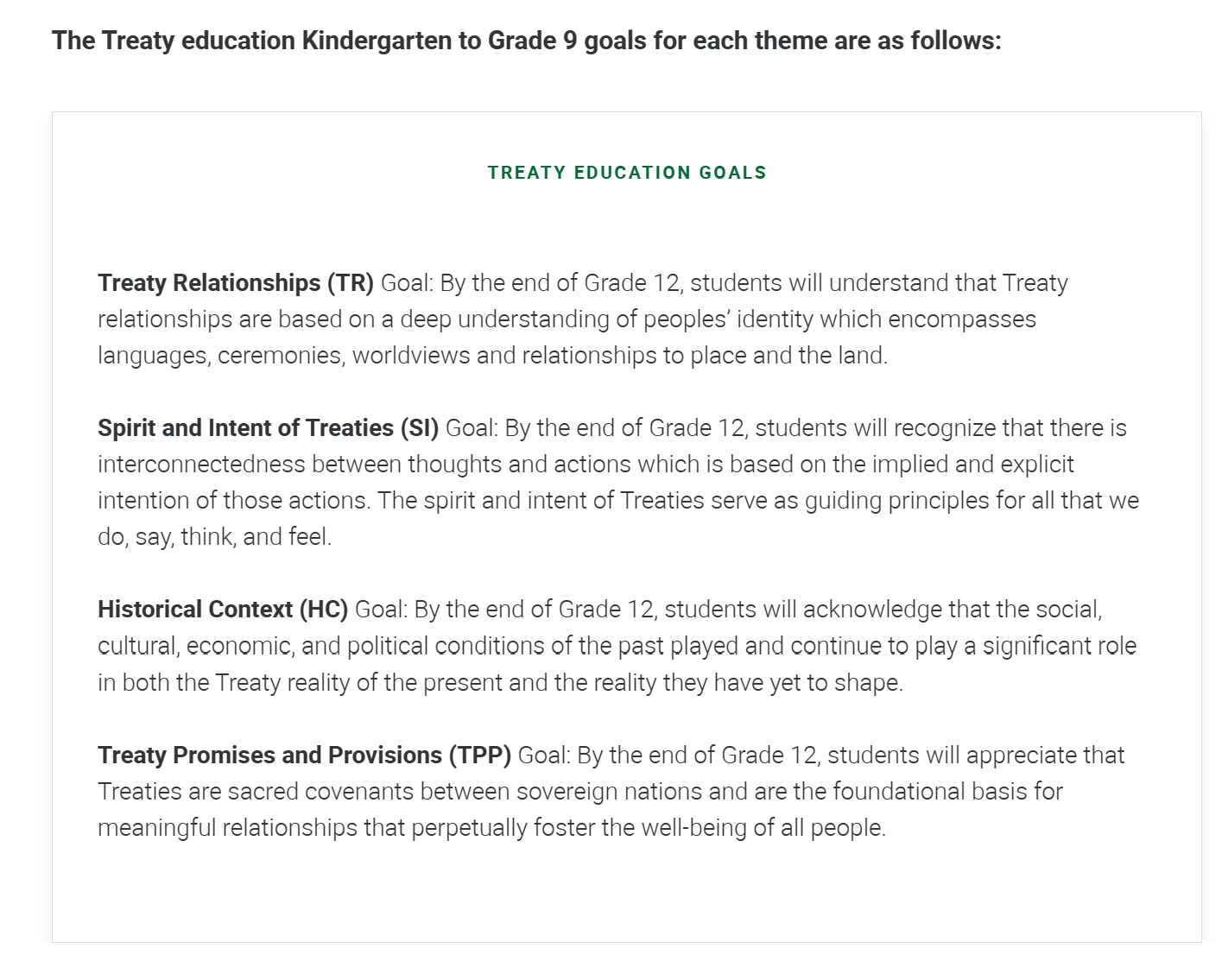
“The importance of Indigenous laws in historic Treaty making has been misunderstood and undervalued, resulting in a very one-sided Eurocentric approach to Treaties. Possession, ownership, exclusion, and exploitation cannot define our relationships with the lands and waters.
We must today breathe life into the original intent of the Treaties. We must live well together, as our ancestors agreed, for as long as the grass grows, the sun shines, and the waters flow.”
Living Well Together – Canada’s History (canadashistory.ca)
On December 10, 2007, the Throne Speech for the Province of Saskatchewan announced the provincial government’s commitment to mandatory Treaty education:
“Treaty education is an important part of forging new ties. There must be an appreciation in the minds of the general public that Treaties are living, breathing documents that continue to bind us to promises made generations ago. This is why my government is committed to making mandatory instruction in history and content of the Treaties in the K-12 curriculum.”

Inquiry Learning
“My teacher (Elder) liked it when I asked questions; this way it reassured him that I understood his teachings. He explained every detail, the meaning and purpose. Not only talked about it, but showed me! Communication, critical and creative thinking was important.”
